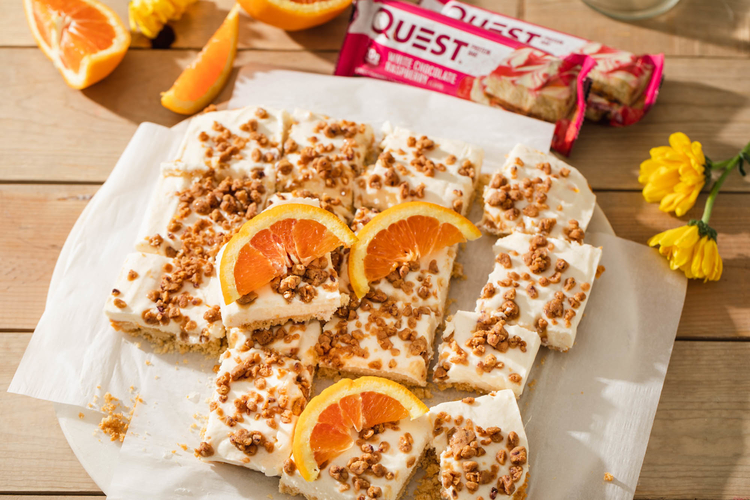Why are vegetables healthy?
Pharmacy (the study of drug metabolism) and Nutrition (the study of food and its biological effects) may seem like two different fields, and save for some common threads they mostly are. Both fields study molecules in the body and how they affect the body, but from different ends of a spectrum; nutrition is able to apply science but never really understands the intricacies of it, and pharmacology tends to delve in the intricacies but cannot draw conclusions about the whole due to confounds.
Asking each group “Why are vegetables healthy?” tends to result in equally unsatisfying answers:
– Pharmacist: Probably some bioactives; we’re going to need to extract them and analyze them in isolation, and then work up towards synergistic combinations of them and how they affect body systems. Hopefully we can draw some conclusions in the next decade.
– Dietitian: They just are healthy! They’re pretty and tasty and make you regular!
(Yes, both of those quotes are jokes. I apologize if I offended any pharmacists, but I’ve gone through dietetic training and I support the accuracy of that quote :D)
In this article I am going to try to prove the dietetics claim, using the pharmacist’s lingo. Following this paragraph are 4 compounds that I find interesting which are in vegetables and fruits. They are interesting due to their ability to do something ‘good’ (either they’re healthy, or in one case it might help muscle mass) and the fact that the required dose to get these effects are low enough that you can just eat veggies and skip out on supplementing (for the most part).
The following are 4 compounds which, via food, can potentially be the cause of the ‘health benefits’ of veggies and fruits.
Ursolic Acid [http://examine.com/supplements/Ursolic+Acid/]
This compound is getting some notoriety as of late because of a very creative study. The authors basically (1) checked genetic changes during fasting and feeding (2) ran a computer program to see the molecule that would most effectively negative muscle protein breakdown during fasting and enhance synthesis during feeding (3) found ursolic acid (4) gave it to mice and affirmed their hypothesis.[http://www.ncbi.nlm.nih.gov/pubmed/21641545]
Muscle protein synthesis was enhanced at 0.14% of the diet; not a high dose, and may be gained through eating ursolic-acid rich foods (Although Holy Basil appears to be highest, it isn’t tasty; ursolic acid appears to be in low doses in damn near everything, and this dose can probably be achieved via 5-10 servings of veggies a day).
For those reading the linked study and note that Ursolic Acid inhibited muscle protein breakdown, don’t get your hopes up. It was a 200mg/kg bodyweight injection and this compound has an oral bioavailability of 0.6%; oral supplementation most likely won’t preserve lean mass during fasts based off this study.
Ecdysteroids[http://examine.com/supplements/Ecdysteroids/]
Despite ‘steroids’ appearing right in the name, these compounds do not have any androgenicity.[ http://www.ncbi.nlm.nih.gov/pubmed/20363237] They had a little social following in the past since Eastern Europeans (who we tend to see as jacked through our rose colored glasses) drank suma root tea, suma root has ecdysterone content, and one study noted that when you put ecdysterone beside a muscle cell it was as effective as the anabolic steroids Nerobol.[ http://www.springerlink.com/content/32h833u4p480x87t/] Unfortunately, the body metabolizes this compound in about 8 minutes, so it is as potent as Nerobol for 8 minutes at best; another way of saying 1/180th as potent over the course of a day.
This doesn’t mean it is useless though. It is a shame the following research hasn’t been looked into more, but it seems doses between 0.2mcg/kg a day (micrograms, not a typo) and 0.4mg/kg a day are able to enhance protein synthesis in animals. To be slightly more technically accurate, it seems to preserve protein synthesis rates when they would normally be reduced by a nutrient poor diet.[ http://agris.fao.org/agris-search/search/display.do?f=1998/CZ/CZ98008.xml;CZ1997001265][ http://www.ncbi.nlm.nih.gov/pmc/articles/PMC524647/] Nobody has any idea what the heck is happening at these low doses, but it has been noted before. 0.2mcg/kg is about a small serving of spinach, enough to leaf up a sandwich.
Bromelain [http://examine.com/supplements/Bromelain/]
This was actually a late addition to the list, although it interests me that the one compound with ‘Bro’ in the name is the one that defies convention and logic when it comes to the body (but Brah, you don’t want to absorb an active enzyme in the intestines? Don’t worry, I won’t be long in the body. Whoops, I accidentally wrecked this receptor system, did you need that Brah?). In general, bromelain is an anti-inflammatory compound that seems to work by preventing pro-inflammatory signals from talking to immune cells and telling them to cause inflammation. Bromelain is basically selectively cutting telephone lines in a haphazardous manner, and the end result (luckily) is anti-inflammation.
It’s seen at dosages as low as 5mg; not per kilogram, just 5mg total. In rats at least.[ http://www.ncbi.nlm.nih.gov/pubmed/15936249] That’s basically half a cup of pineapple, with enough to spare.
Catechins [http://examine.com/supplements/Green+Tea+Catechins/]
Catechin refers to a certain structure, and is a class of related molecules. They are most famous for being ‘those healthy things in green tea’, despite the fact that they occur in almost every plant in existence (just in highest amounts in the Camellia Sinensis plant where green, white, and black tea are derived from). The EGCG compound people talk about when referring about green tea is a catechin, which is what the C refers to.
Catechins make almost everything better.
Just looking at the Examine page linked beside the title, catechins are synergistic (the 1+1=3 sort of relationship) with Vitamin C, Curcumin (the curry/turmeric molecule), fish oil, caffeine, ephedrine, CoEnzyme Q10 and Inositol (two vitamin-like compounds), compounds in pepper (capsicum vanilloids) that also exist in many plants, and other component of green tea itself (L-theanine, a relaxing amino acid, and all catechins are synergistic with each other apparently). This list is most likely incomplete as these discoveries have been accidental for the most part and there are likely many more compounds synergistic with green tea. These catechins are also found in wine, and are one of the many compounds synergistic with the red wine compound Resveratrol.
Most of the synergisms above occur with incubated levels of catechins which can be derived from either multiple servings of veggies or a cup of green tea; not unfeasible dosages.
Take home messages
– Veggies tend to be healthy.
– They tend to be healthy because the bioactives in them are effective at low doses, and their effects just happen to be in line with what we deem healthy (it’s a good thing we find ‘anti-inflammation’ healthy, because lots of veggies do that)
– Although only 4 were listed, there are many of them out there. It is possible that they are sufficient to provide benefit in food form, and it is even possible that they are enhanced in food form by other co-existing compounds.
– Veggies don’t have divine intervention to make them healthy or to have synergistic bioactives, they just happen to do that stuff. This is because the plants that, by chance, do unhealthy stuff were deemed to be toxins by our ancestors who tried to make bread from apple seeds or brew hemlock tea.
SilverHydra is an Online Nutritional Consultant and Supplement Researcher
Follow him on Twitter @Silverhydra or visit his blog at Silverhydra.com


